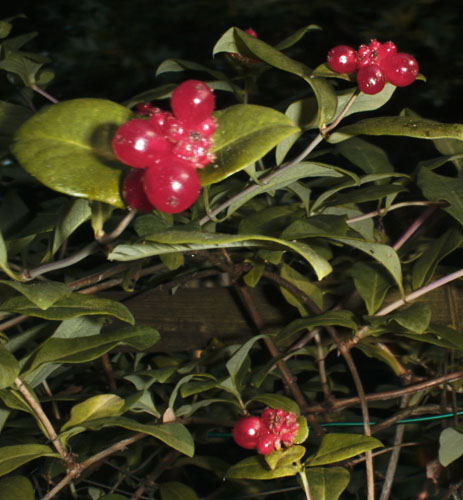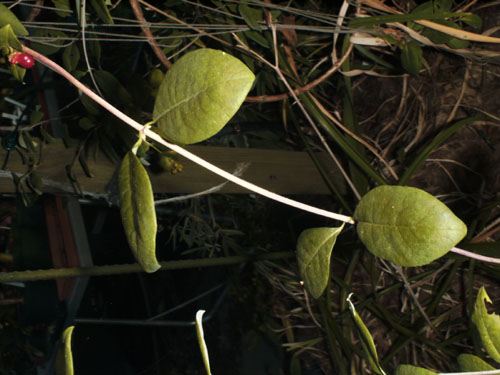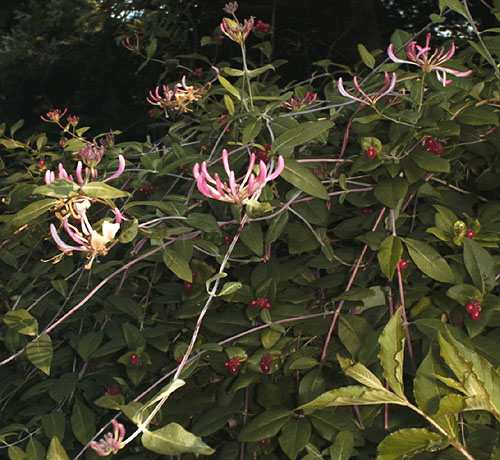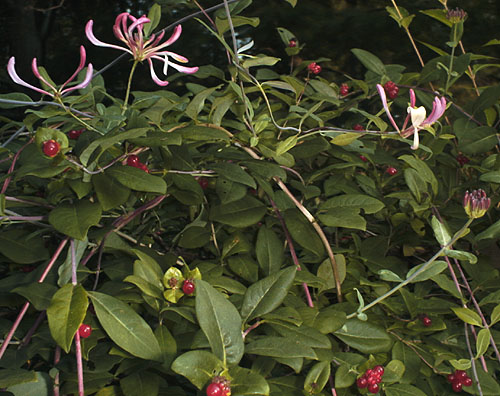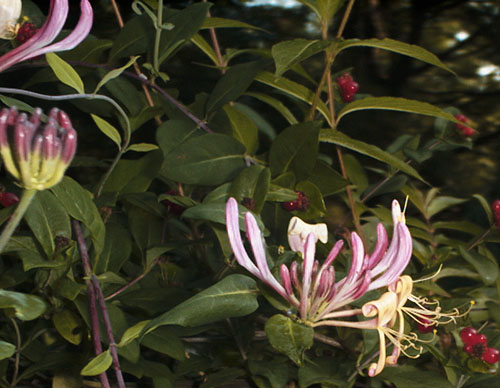Lonicera periclymenum
Woodbine Honeysuckle, Woodbine
Caprifoliaceae
ExpandHabitat
- native to Europe and North Africa
- hardy to zone 4
Habit and Form
- a deciduous twining vine
- 10' to 20' tall, depending on structure
- medium texture
- fast growth rate
Summer Foliage
- opposite, simple leaves
- simple, deciduous leaves
- ovate leaf shape
- entire leaf margin
- 1.5" to 2.5" long
- 1" to 1.5" wide
- leafs out early
- dark green leaf color
Autumn Foliage
- no fall color
- leaves drop green
Flowers
- creamy white flowers with a purplish tinge
- fragrant
- tubular up to 2" long
- two-lipped
- found in whorls on spikes
- blooms in spring and sporadic through season
Fruit
- deep, red berries
- 0.25" in diameter
- matures in September
Bark
- twining, thin stems
- tan colored
- glabrous
Culture
- easy to grow
- easily transplanted
- prefers well-drained, neutral soil
- full sun to shade
- needs support
- prune after flowering
Landscape Use
- quick covering vine
- bank cover
- fence cover
- arbor
- fore fragrance
- for flowering effect
- attracts hummingbirds
Liabilities
- powdery mildew
- leaf spot
ID Features
- twining vine
- white flowers with a purplish tinge
- flowers are not fragrant
- opposite leaf arrangement
- small red fruit
- no fall color
Propagation
- by cuttings
- by seed
Cultivars/Varieties
'Belgica' - The stems and leaves of this form bear a purplish tinge, while the blooms are purple-red outside and lighter inside. It is an old selection that is still commonly offered.
'Harlequin' - The leaves of this new selection are variegated with a creamy margin that often bears pink highlights. Other variegated forms are known, such as 'Serotina Variegata' and 'Variegata'.
'Graham Thomas' - This popular favorite reliably produces ample quantities of light yellow blooms.
'Manul' (Berries Jubilee™) - This cultivar bears questionable affinity to the species. It produces yellow blooms that are followed by red fruit.
'Serotina' (also listed as 'Serotina Florida') - Commonly offered in specialty catalogs, this cultivar blooms slightly later than the species and over a longer period. The blooms are purple-red outside and creamy inside, though the strong color fades with age.
